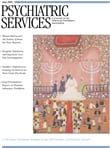Addiction and the Medical Complications of Drug Abuse
From the start, Addiction and the Medical Complications of Drug Abuse presents a good overview for understanding the principles of addiction medicine. The importance of motivation is addressed in parallel with the dependence-forming potential of drugs; understanding both is key for any clinician looking at the nature of addiction and the toll that addiction takes on individuals and their families.
The sections on buprenorphine, withdrawal symptoms, and replacement prescribing are well presented, with excellent references listed in each section. Medical aspects and emergency management of drug abuse are covered in longer and more extensively referenced sections. They may be a bit harder to digest for the nonprescribing clinician working on an inpatient unit. They serve as a good reference for those working in emergency departments and for many clinicians working in free-standing clinics.
As a tobacco and nicotine researcher and clinician, I would have liked to have seen a section addressing tobacco and nicotine disorders more fully. Leaving these out of a discussion of a book on addiction helps foster denial among patients and clinicians alike. Understanding tobacco and tobacco cessation is particularly important when working with persons with serious mental illness. For example, when a patient stops smoking, his or her medication levels may be altered as the liver adjusts, and the same may be true when the patient starts or resumes smoking. Caffeine is another agent to be considered in this regard.
Understanding comorbidity and motivation is critical for any clinician in any setting when dealing with the issues of addiction and drug abuse. If neglected, these areas will be a source of frustration for both patient and clinician. Addiction and the Medical Complications of Drug Abuse covers these areas well. I recommend that both of these sections be suggested reading for any resident or new clinician in this field.
Nonprescribing emergency department clinicians and outpatient clinicians in substance abuse or mental health programs who deal with patients who have substance use disorders (these days that's virtually all personnel in these settings) would do well to sample sections of this book. Physicians would benefit from a read cover to cover.
The reviewer reports no competing interests.



